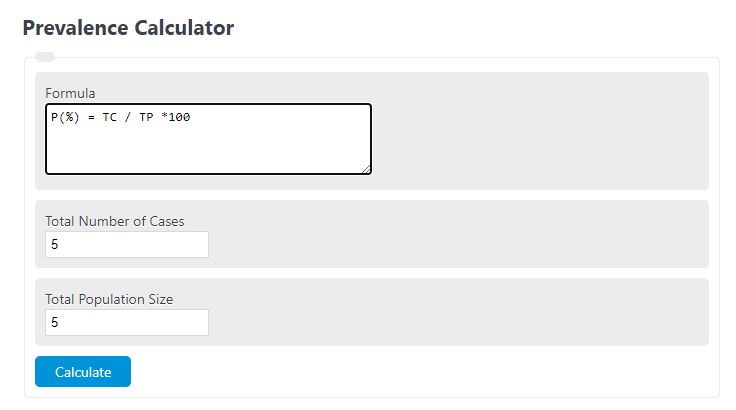Enter the total number of cases and the total population into the calculator to determine the prevalence of a disease. This calculator can also determine the number of cases or population size if provided the other variables.
- Incidence Rate Calculator
- Attributable Risk Calculator
- Relative Risk Calculator
- Absolute Risk Reduction Calculator
- Cases Per Million Calculator
Prevalence Formula
The following formula is used to calculate the prevalence rate of a disease.
P() = TC / TP *100
- Where P() is the prevalence rate (%)
- TC is the total number of cases
- TP is the total population size
To calculate prevalence, divide the number of cases by the population size, then multiply the result by 100.
Prevalence Definition
Prevalence is defined as the portion or percentage of a population that has contracted a certain disease.
Prevalence Example
How to calculate prevalence?
- First, determine the total number of cases.
Measure and determine the total number of people infected. For this example, we will say this number is 25.
- Next, determine the total population size.
For this example we will say the population size is 100 people.
- Finally, calculate the prevalence.
Using the formula above we find the prevalence is 25/100 * 100 = 25%.
FAQ
Prevalence is a term most often used in medicine to describe what portion of a population has a certain disease. It can however be used in any other science to describe the rate of something occurring compared to a total number of events.

